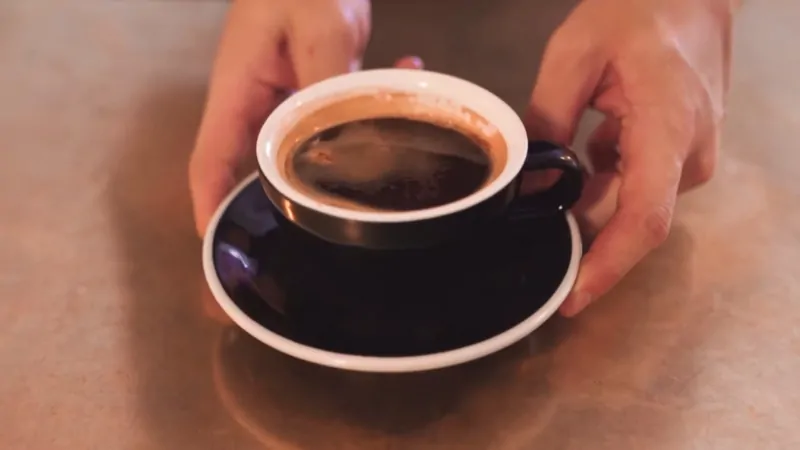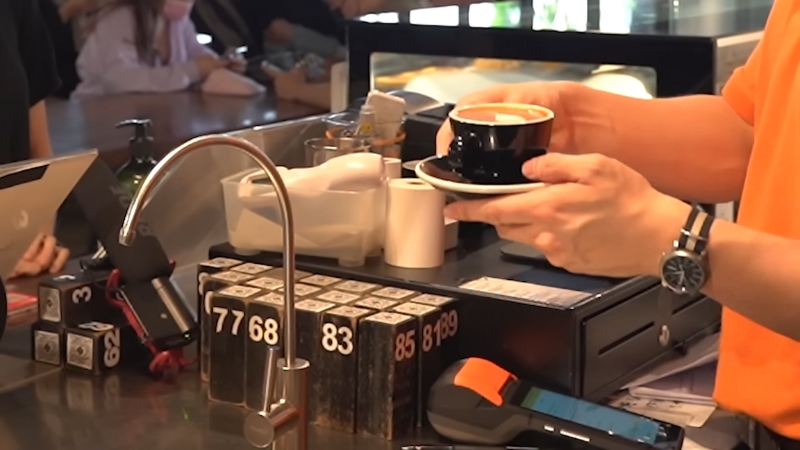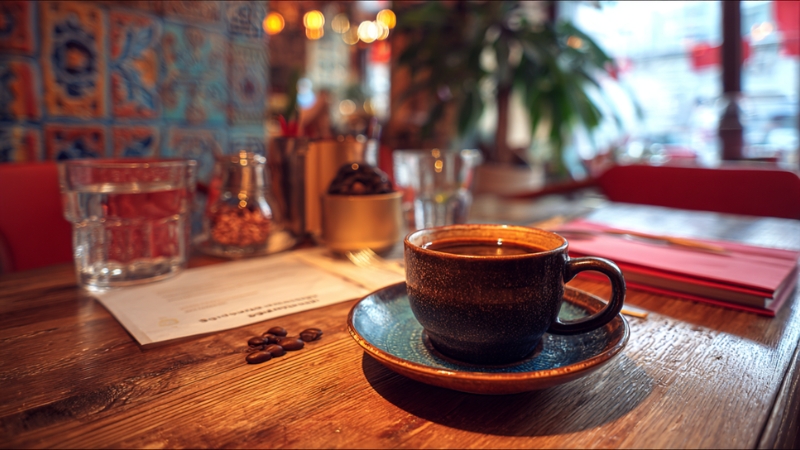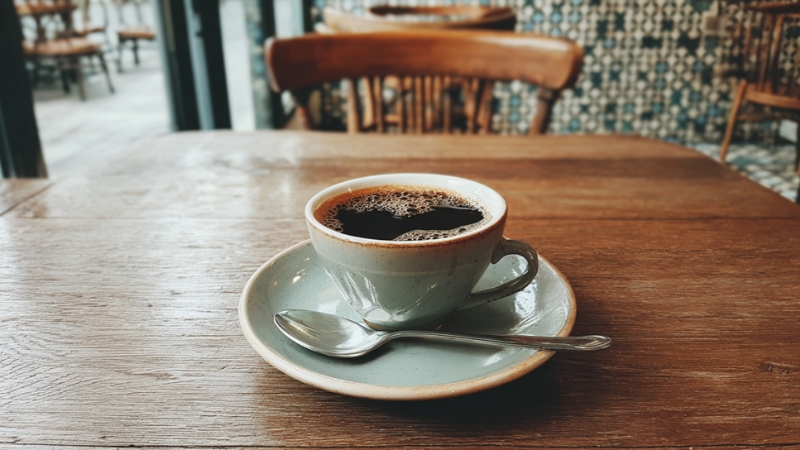If you walk into a Singaporean hawker centre and order a “coffee,” don’t expect a barista to ask whether you want oat milk or caramel drizzle. Instead, you’ll hear a symphony of short, cryptic phrases: “Kopi-O kosong!”, “Kopi peng!”, “Kopi-C siew dai!”
For first-time visitors, this can sound more like code than coffee. But here’s the truth – once you understand it, Singapore’s kopi (the Malay word for coffee) culture becomes one of the most fascinating, efficient, and flavorful coffee systems in the world.
Unlike the Western-style café culture, kopi culture is rooted in local dialects, old traditions, and pure functionality.
Each word in your order describes exactly how you want your drink made – from the type of milk and sugar to whether it’s served hot or iced. And it all happens in seconds at a bustling kopitiam (coffee shop).
What “Kopi” Actually Means

In Singapore, “kopi” doesn’t just mean coffee in general – it specifically refers to local coffee made with robusta beans.
Robusta is stronger, more bitter, and higher in caffeine than the arabica beans used in most Western cafes. The beans are typically roasted with margarine and sugar, giving them a rich, almost caramelized flavor that’s unmistakably Southeast Asian.
After roasting, the coffee is brewed using a cloth sock filter and poured back and forth between metal jugs – a method that aerates the coffee and produces that signature frothy surface.
The end result? A bold, earthy, deeply aromatic brew that forms the foundation of every kopi drink.
The Core Kopi Terms You Need to Know
The beauty of kopi culture lies in its shorthand. Every word in your order tells the kopi uncle (the veteran coffee maker) exactly what you want.
Here’s the basic vocabulary:
Term
Meaning
What It Includes
Kopi
Coffee with condensed milk and sugar
The standard sweet, creamy version
Kopi-O
Coffee with sugar only (no milk)
Black coffee, slightly sweetened
Kopi-C
Coffee with evaporated milk and sugar
Less sweet, milkier taste
Kosong
Means “empty” — no sugar
Used with any kopi variant
Siew Dai
Less sugar
“Siew” = less, “dai” = sweet
Gao
Stronger coffee
More concentrated brew
Po
Weaker coffee
More diluted
Peng
With ice
Served cold
Tarik
“Pulled”
Poured back and forth for froth
Di Lo
No milk, no sugar — pure black
Strongest version possible
So, for example, Kopi-C siew dai peng translates to “Iced coffee with evaporated milk, less sugar.”
Once you know this formula, you can mix and match endlessly.
The Art of Customizing Your Kopi
Singapore’s kopi culture lets you control every part of your drink – even more precisely than a modern café order.
- Want a creamy but not-too-sweet iced version? Order Kopi-C siew dai peng.
- Need an intense morning jolt? Try Kopi gao.
- Craving something light in the afternoon? Go for Kopi-O po.
Locals treat this language like a second nature. It’s not just coffee; it’s communication.
Each kopitiam regular has a personal “coffee signature” – their exact combination of milk, sugar, and temperature. Once the kopi uncle knows yours, you’ll never need to repeat it.
Milk: Condensed vs Evaporated
Two kinds of milk dominate Singapore’s kopi culture:
Milk Type
Used In
Description
Condensed Milk
Kopi
Thick, sweet, made from milk and sugar
Evaporated Milk
Kopi-C
Unsweetened, lighter, more subtle flavor
This distinction matters. Kopi is rich and dessert-like, the kind of drink that feels like breakfast and caffeine in one. Kopi-C, on the other hand, is lighter – still creamy, but more balanced and less sweet.
If you’re watching your sugar intake or prefer a flavor closer to Western-style lattes, Kopi-C siew dai is your best bet.
How “Kopi Uncles” Keep It All Straight

It’s one of the most impressive feats of memory you’ll ever witness. A kopi uncle can take ten different orders in rapid-fire local dialect, remember who ordered what, and have every drink ready in minutes – all without writing anything down.
They rely on years of muscle memory and coded communication:
- The tone of your order tells them your preferences.
- The cup markings (usually small strokes or letters) indicate sugar or milk variations.
- Even the position of the cup on the tray might mean “iced” or “less sugar.”
It’s part skill, part performance, and it’s a huge part of what makes kopi culture so alive.
Kopitiam vs Café: Same Coffee, Different Worlds
View this post on Instagram
A kopitiam is not your typical coffee shop. It’s an open-air food court, often attached to hawker centers, where locals grab breakfast, lunch, or a quick caffeine hit before work.
The atmosphere is noisy, communal, and wonderfully chaotic – stainless steel cups clinking, orders shouted across the counter, the aroma of kaya toast and curry noodles filling the air.
While cafés serve espresso-based drinks at $6–$8 a cup, a kopi at a hawker stall costs around $1.50 – and it often tastes better if you like your coffee strong and honest.
Many Singaporeans have a morning ritual: Kopi + Kaya Toast + Soft-Boiled Eggs – a local classic that combines caffeine, sweetness, and protein in perfect harmony.
When in Doubt, Start Simple
If you’re new to Singaporean kopi culture, start with one of these safe bets:
If You Like…
Try Ordering…
Why
A sweet, creamy coffee
Kopi
Rich condensed milk flavor
A balanced milk coffee
Kopi-C siew dai
Evaporated milk, less sweet
A black coffee
Kopi-O kosong
No milk, no sugar
Iced cold brew vibes
Kopi peng
Chilled and refreshing
Super strong espresso-like
Kopi gao
Concentrated and bold
Once you find your favorite base, you can customize endlessly – add “peng” for iced, “siew dai” for less sugar, or “kosong” for no sugar at all.
Bonus: Kopi vs Teh – the Sister Drink System
@oli968fm What type of kopi/teh orderer are you ☕🍵? Comment now 😉! #NaaluSemmaVaalu #mediacorpNaaluSemmaVaalu #TeaKadai #OLI968 #mediacorpOLI968 #KettalaeParavasam ♬ Funny video “Carmen Prelude” Arranging weakness(836530) – yo suzuki(akisai)
Coffee’s tea counterpart in Singapore follows the same code:
- Teh = milk tea (with condensed milk)
- Teh-C = evaporated milk tea
- Teh-O = black tea with sugar only
- Teh tarik = “pulled” tea, frothy and sweet
If you can order kopi, you can order teh just as easily – the rules are identical.
Kopi Culture Is About Efficiency, Not Fancy Latte Art

The brilliance of Singapore’s kopi system lies in its simplicity. There’s no waiting for milk frothing or latte art. Your drink is brewed strong, sweet, and fast – the perfect grab-and-go fuel for a city that runs on precision and punctuality.
It’s also deeply cultural. The way you order your kopi often signals who you are – your background, your generation, even your work habits.
Older uncles stick with Kopi-O, younger professionals lean toward Kopi-C siew dai peng, and tourists start with Kopi-C until they’re ready to experiment.
Bottom Line
Ordering kopi isn’t just about getting caffeine – it’s about participating in a piece of Singapore’s living culture. It’s a mix of Chinese dialects, Malay slang, and decades of efficiency honed to perfection.
Once you get the hang of it, you’ll not only save time and money – you’ll earn a smile from the kopi uncle who recognizes that you’re no longer a tourist, but part of the rhythm of the kopitiam.
Many of Singapore’s most unique restaurants still preserve that same spirit, blending old kopitiam charm with inventive menus that celebrate both tradition and creativity.
So next time you’re in Singapore, skip the Starbucks line. Walk up to a hawker stall, take a deep breath, and confidently say:
“Kopi-C siew dai peng!”
You’ll fit right in.

